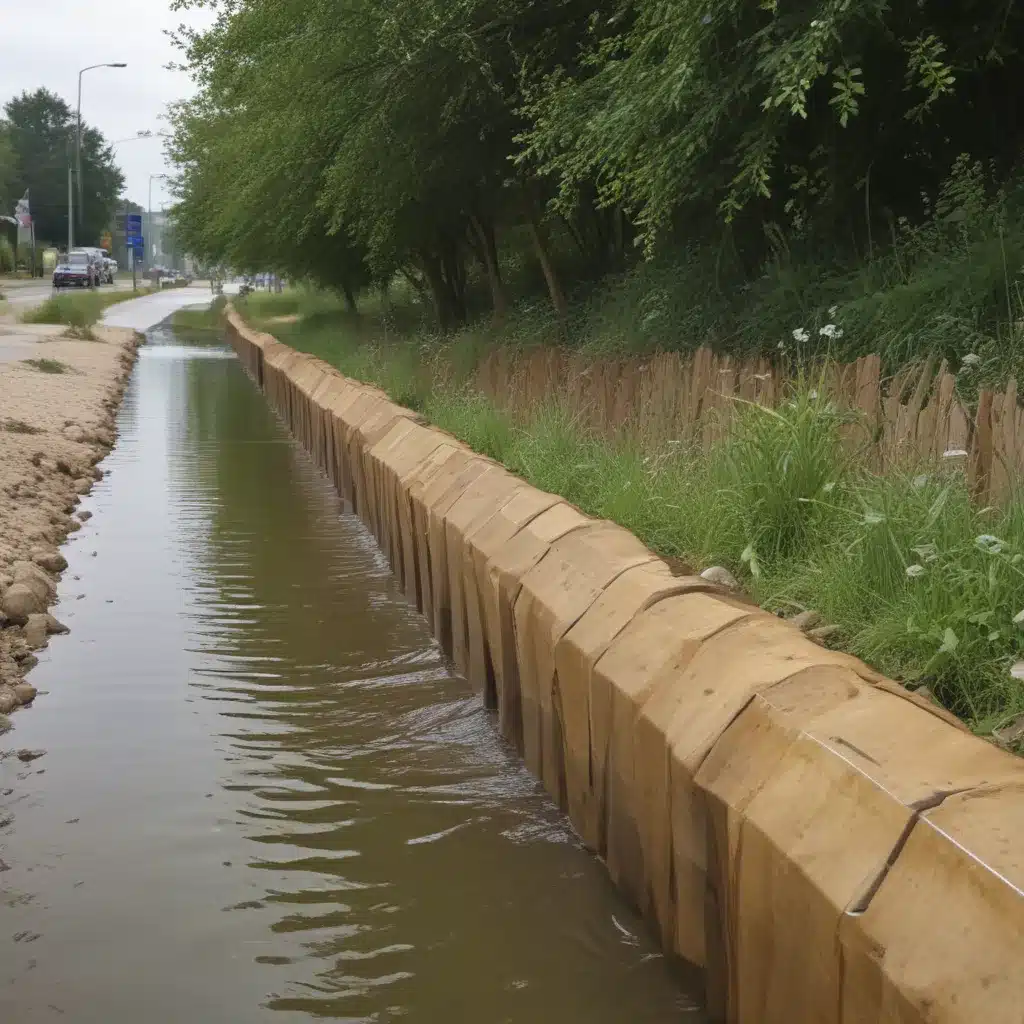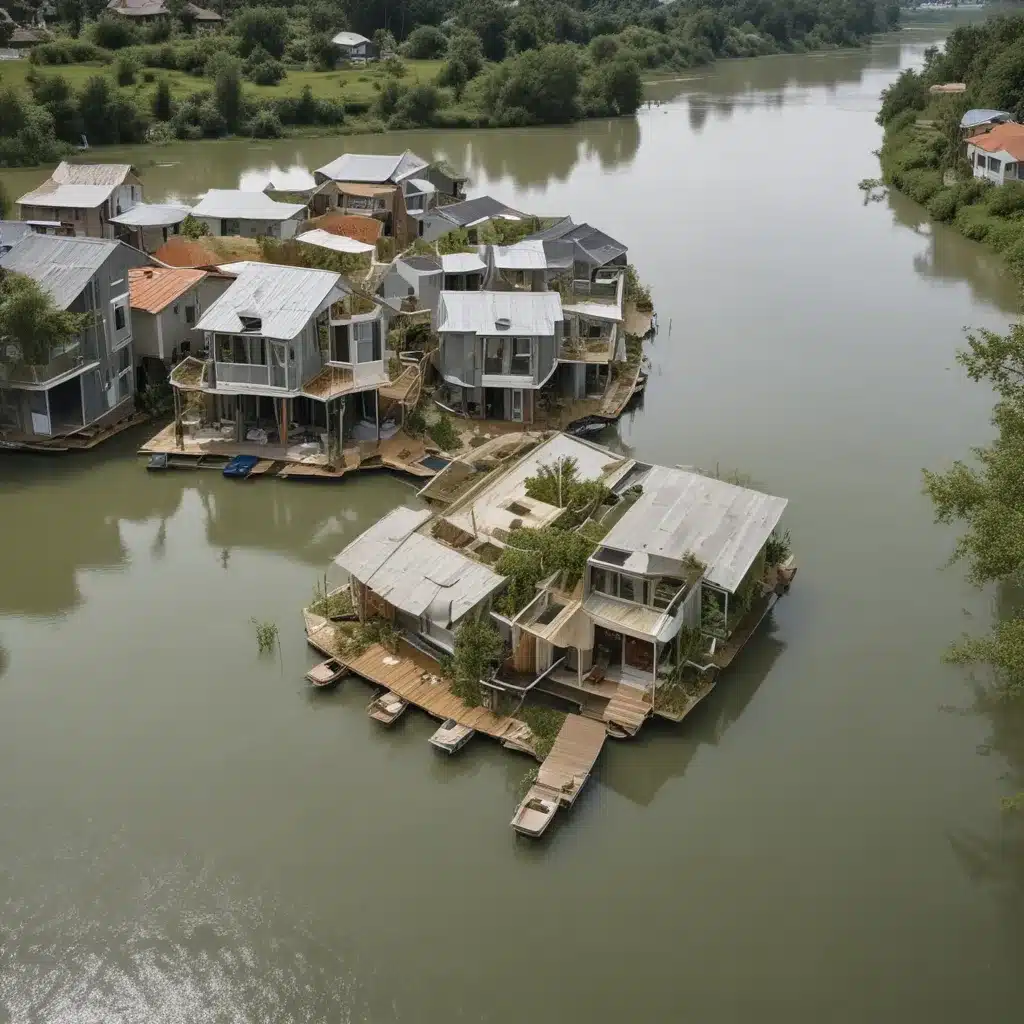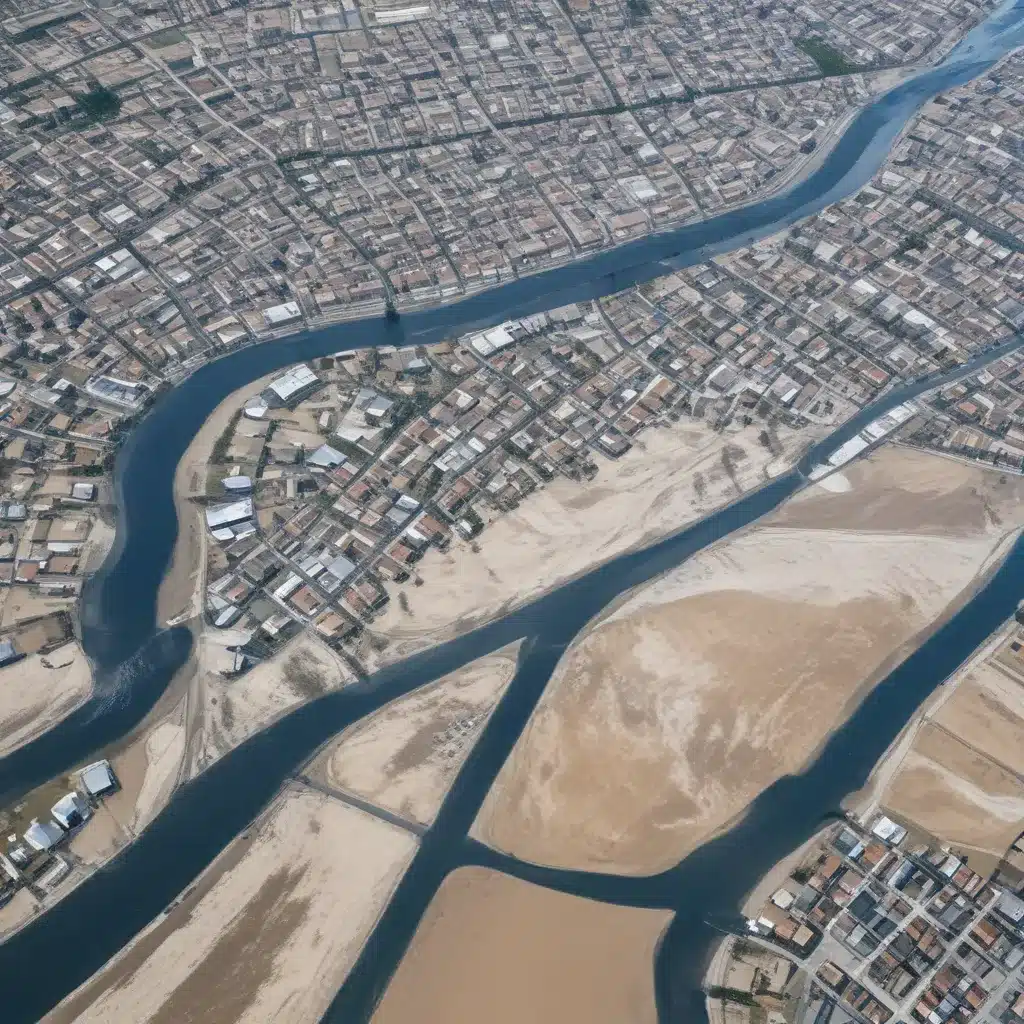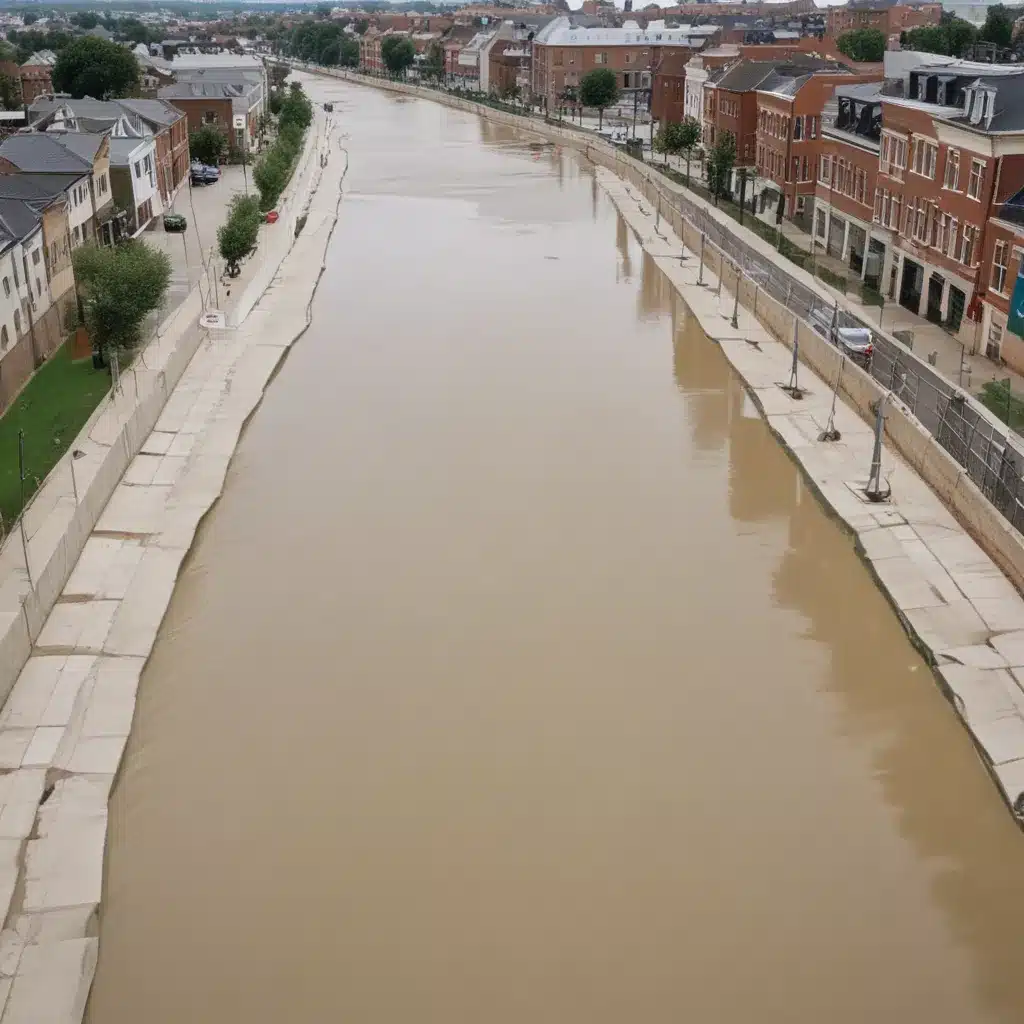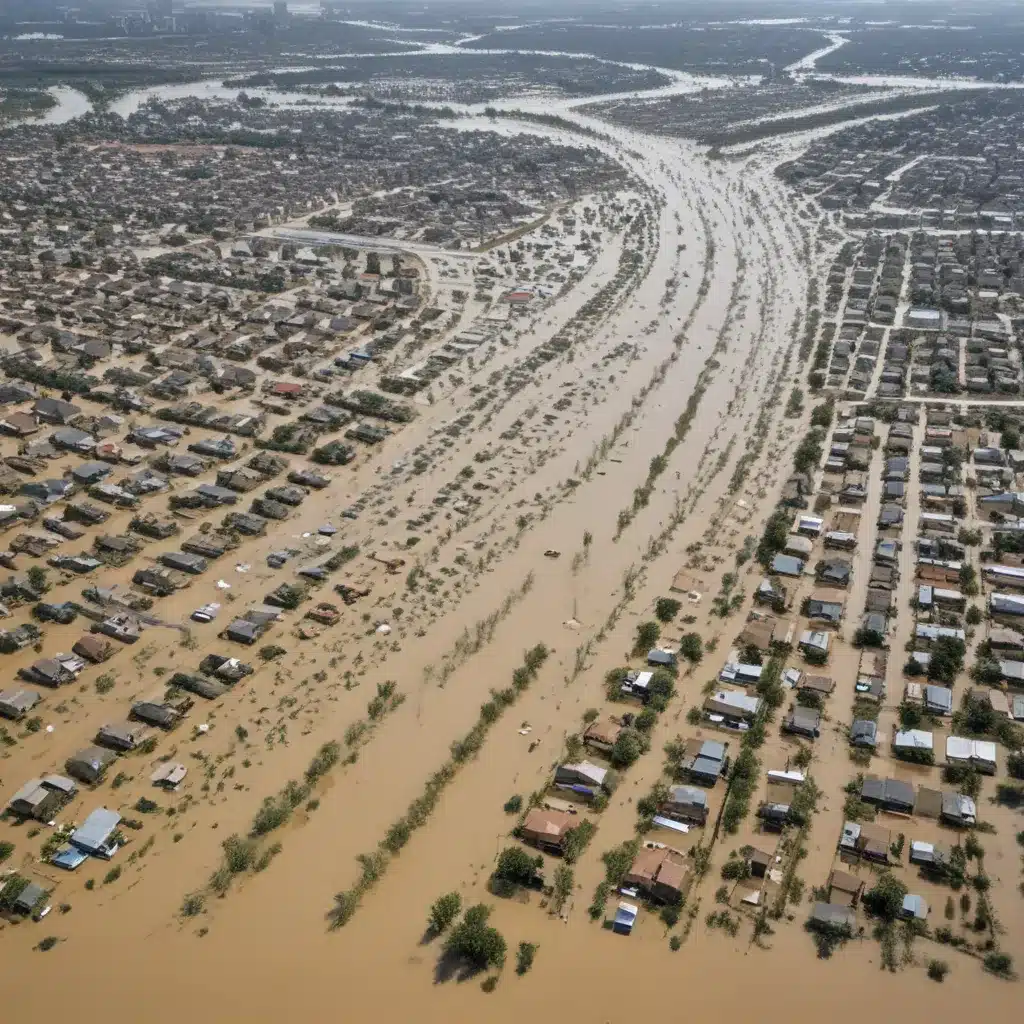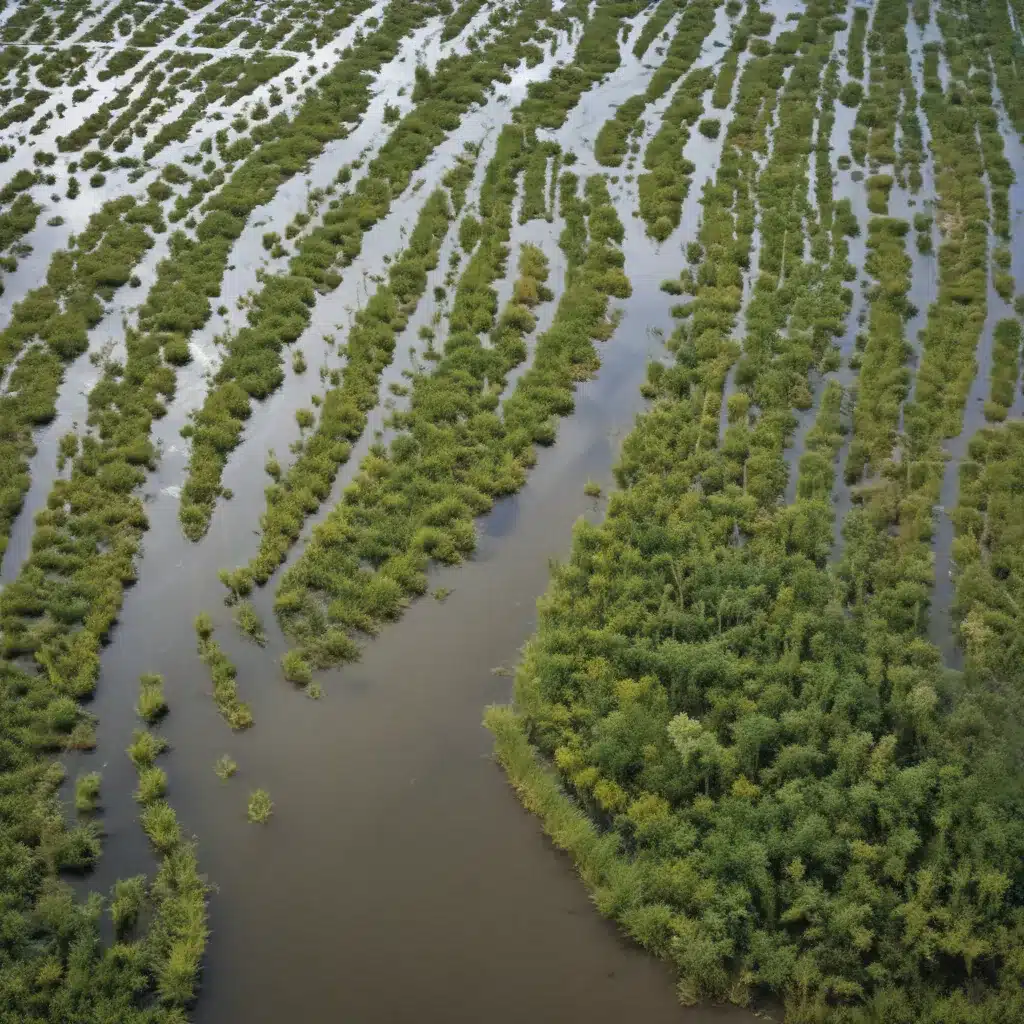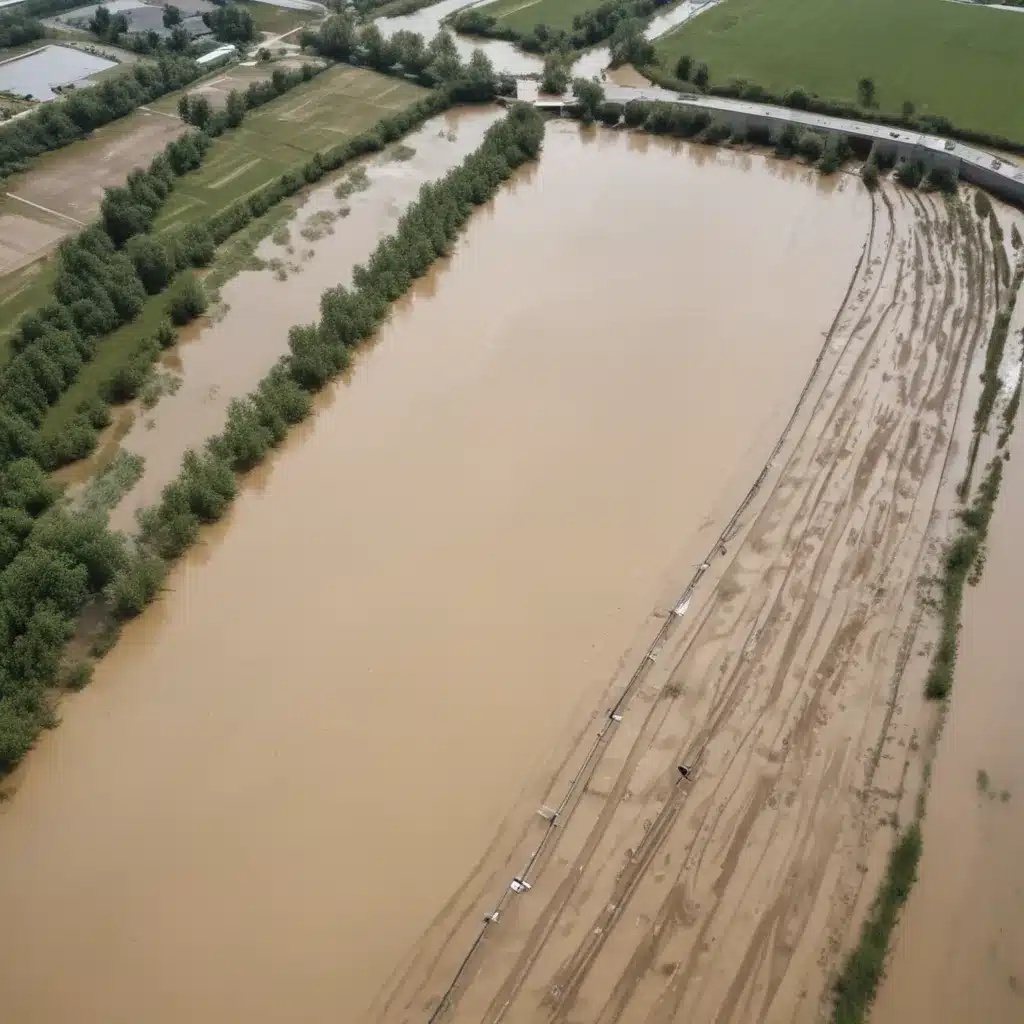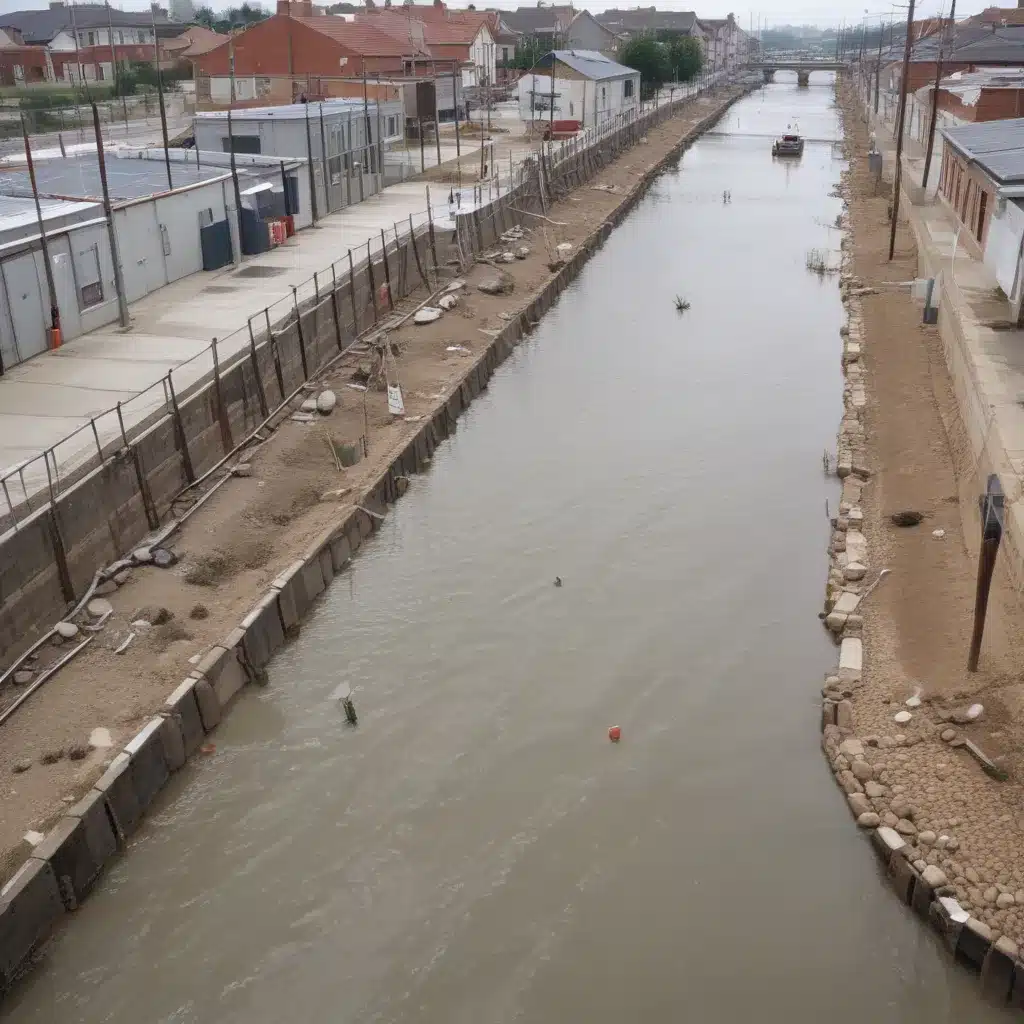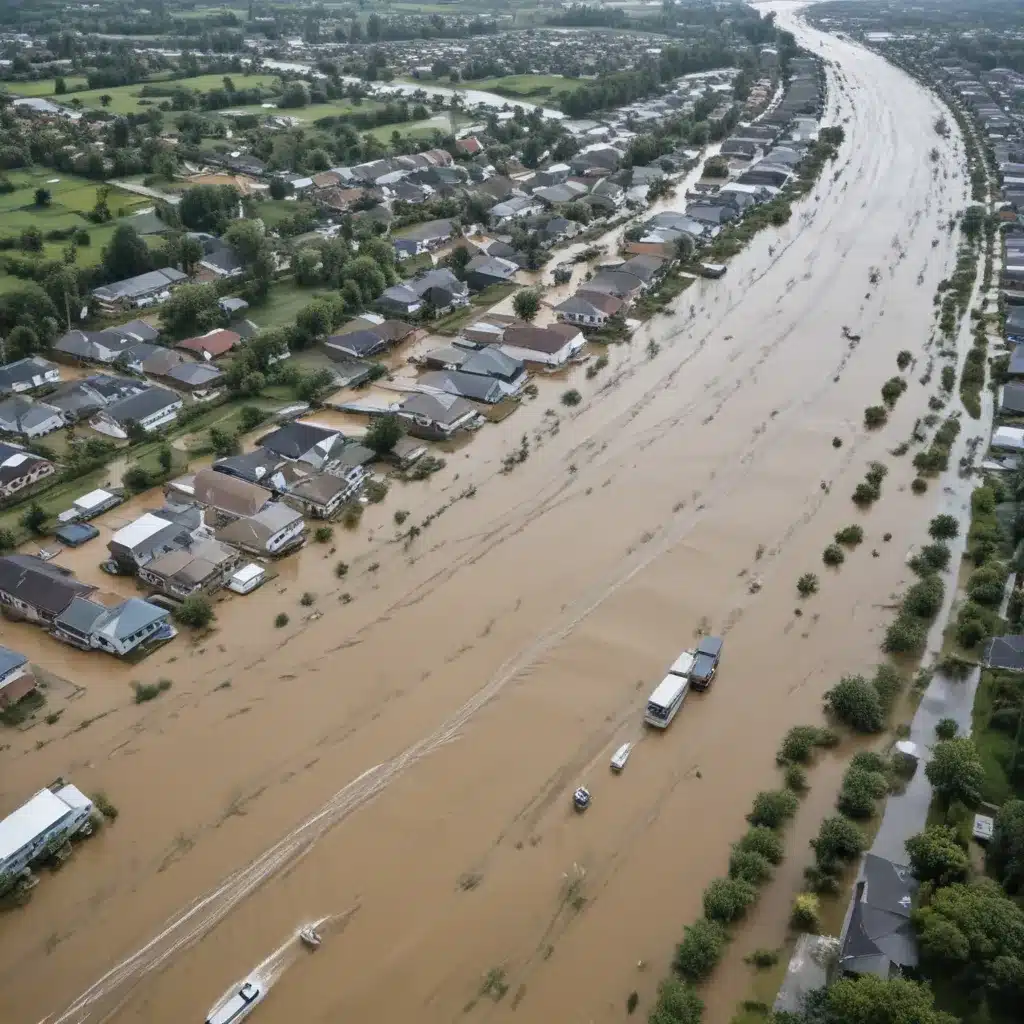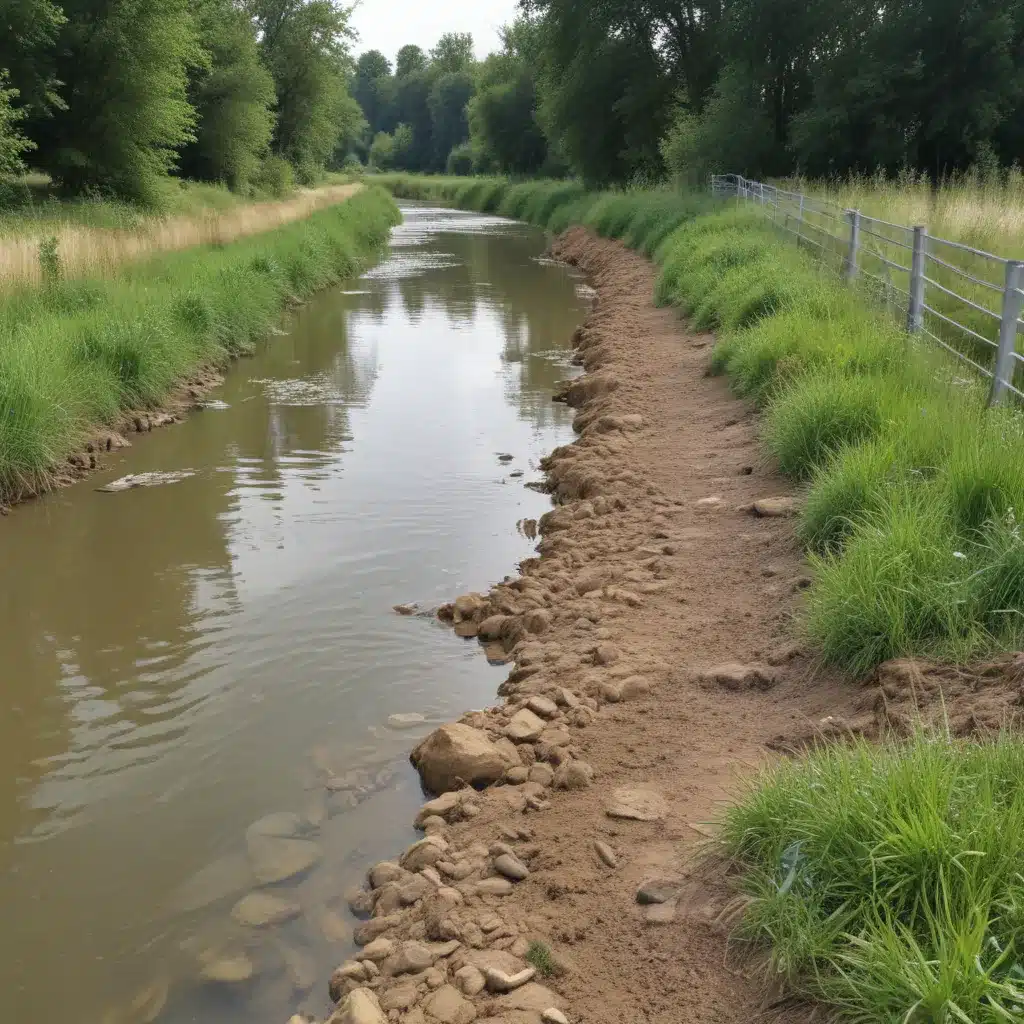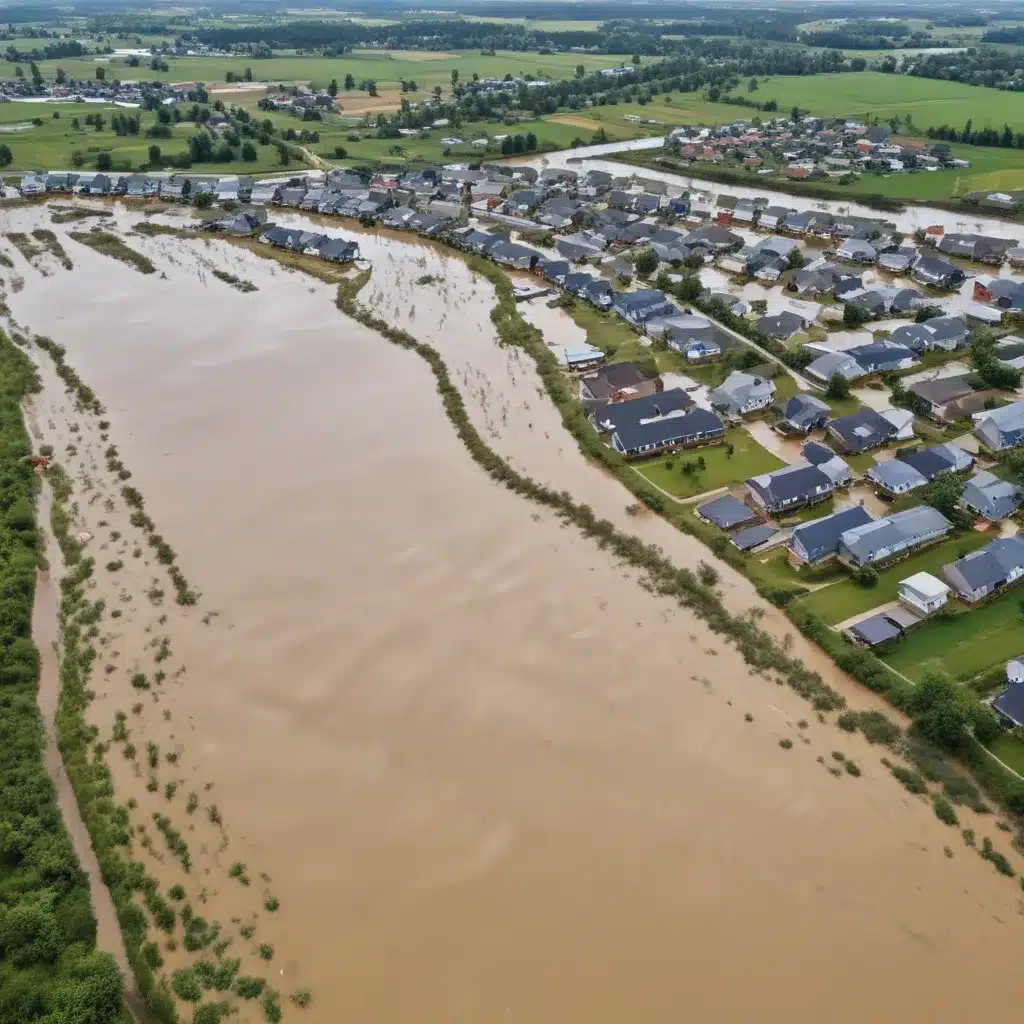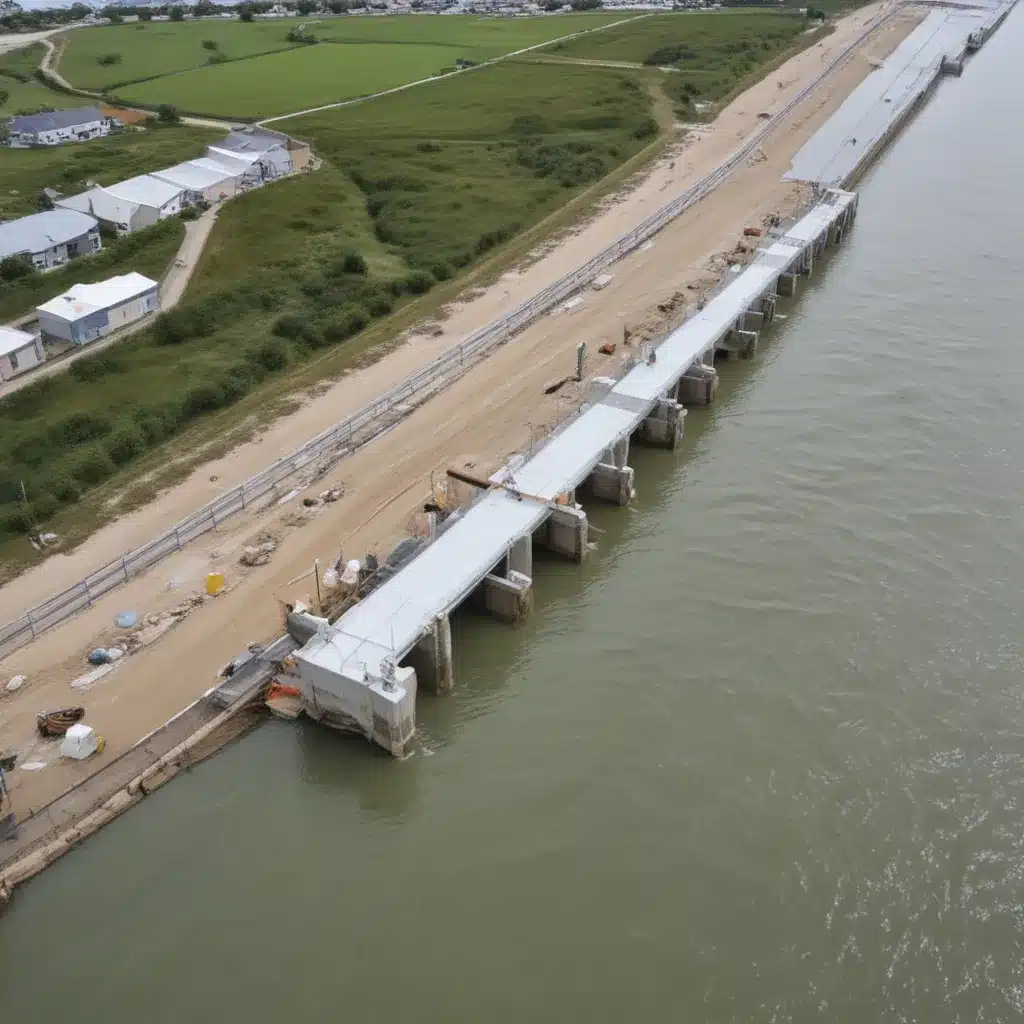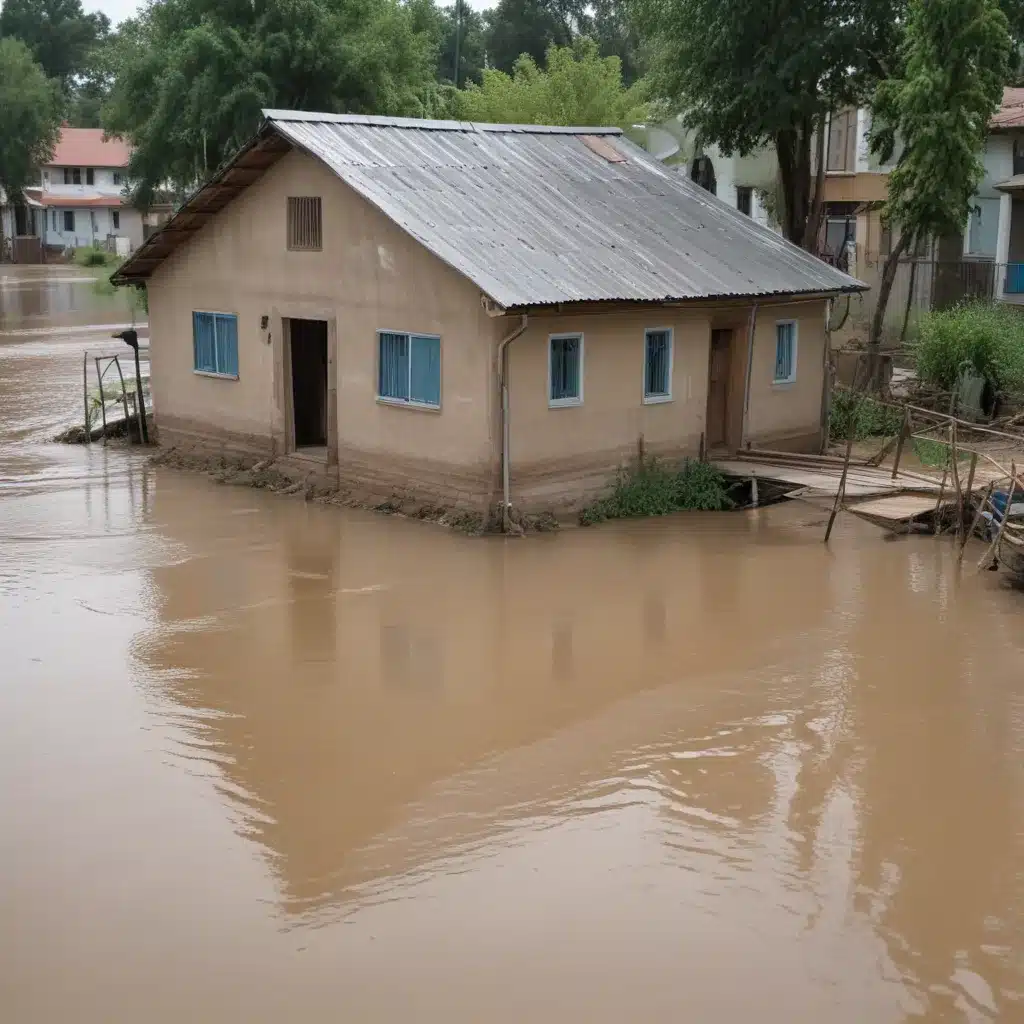In recent years, major global flooding events have served as stark reminders of the devastating impacts of rising water levels. Take, for instance, the catastrophic floods that ravaged Houston in 2017, leaving thousands of homes submerged and causing billions of dollars in damages. While these events may seem overwhelming, they also provide valuable lessons that can help us better prepare for and mitigate the effects of future flooding occurrences. By examining the factors that contribute to floods, such as climate change and deforestation, and exploring the importance of early warning systems, community preparedness, and resilient infrastructure, we can begin to understand the complexities of flood management and work towards implementing effective strategies. So, what are the key lessons learned from these major global flooding events?
Key Takeaways
- Implementation of early warning systems is crucial in mitigating the impact of global flooding events.
- Climate change contributes to the intensification and frequency of floods worldwide.
- Conducting comprehensive flood risk assessments helps in understanding the potential impacts of climate change on specific regions.
- Addressing deforestation is crucial in reducing flood risk and protecting ecosystems.
Early Warning Systems
We have found that the implementation of early warning systems is crucial in mitigating the impact of global flooding events. Early warning systems play a vital role in ensuring community preparedness and reducing the devastating effects of floods. By providing timely and accurate information, these systems enable individuals, communities, and governments to take proactive measures to protect lives, property, and infrastructure.
One of the key components of effective early warning systems is the use of advanced technology and data analysis. Innovations such as remote sensing, satellite imagery, and real-time monitoring allow for the detection and prediction of flood events with greater precision. This enables authorities to issue timely warnings and alerts to potentially affected areas, giving people more time to evacuate or take necessary precautions.
Furthermore, early warning systems should not only focus on providing information but also on building community preparedness. This involves educating and empowering individuals to understand the risks associated with floods and to take appropriate actions. Community engagement initiatives, such as public awareness campaigns, training programs, and the development of emergency response plans, are essential in fostering a culture of preparedness and resilience.
In addition to technological advancements and community engagement, effective early warning systems require strong coordination and collaboration among various stakeholders. This includes government agencies, meteorological departments, disaster management organizations, and local communities. By working together, sharing information, and coordinating response efforts, the impact of global flooding events can be minimized, and lives can be saved.
Importance of Community Preparedness
Ensuring community preparedness is crucial in mitigating the impact of global flooding events. When it comes to disaster preparedness, the active engagement of the community plays a vital role in minimizing the damage caused by flooding. Here are three reasons why community preparedness is of utmost importance:
- Empowering individuals: Engaging the community in disaster preparedness efforts empowers individuals to take responsibility for their own safety. By providing them with the necessary knowledge and resources, we can equip them to make informed decisions during flood events. This sense of empowerment fosters resilience and encourages individuals to actively participate in their own safety.
- Building a strong support network: Community engagement in disaster preparedness creates a strong support network that can effectively respond to flooding events. When individuals come together, they can pool their resources, skills, and knowledge, making it easier to cope with the challenges posed by floods. This collective effort strengthens the community’s ability to respond and recover from the impacts of flooding.
- Fostering innovation: Community preparedness initiatives provide a platform for innovation and the development of new solutions. By involving the community in discussions and planning, we tap into a diverse range of perspectives and ideas. This collaborative approach promotes creativity and encourages the exploration of innovative technologies and strategies to enhance flood resilience.
Role of Climate Change in Flooding Events
As we explore the role of climate change in flooding events, it is crucial to acknowledge the significant impact it has on our communities. Rising temperatures and changing weather patterns contribute to the intensification and frequency of floods worldwide. To mitigate these risks, it is essential to implement effective flooding mitigation measures, such as improved infrastructure, early warning systems, and sustainable land management practices.
Climate Change Impact
Climate change plays a significant role in the occurrence and severity of flooding events worldwide. As our planet continues to warm, we are witnessing more intense and frequent rainfall, leading to increased flood risks. The impact of climate change on flooding events cannot be ignored, and it is crucial that we take immediate action to address this issue.
- Adaptation: We must prioritize climate change adaptation strategies to reduce the vulnerability of communities to flooding. This includes implementing measures such as building resilient infrastructure and improving early warning systems.
- Flood Risk Assessment: Conducting comprehensive flood risk assessments is essential in understanding the potential impacts of climate change on specific regions. By identifying areas at high risk, we can develop targeted mitigation and preparedness plans.
- Innovation: Embracing innovative solutions is key to tackling the challenges posed by climate change and flooding. From nature-based solutions like green infrastructure to advanced technologies for flood monitoring and prediction, innovation holds the potential to revolutionize our approach to managing flood risks in a changing climate.
Flooding Mitigation Measures
With the understanding of climate change’s impact on flooding events, it is imperative to explore effective mitigation measures. One crucial step in mitigating the risks of flooding is conducting comprehensive flood risk assessments. These assessments help identify vulnerable areas, evaluate the potential impacts of flooding, and inform the development of targeted mitigation strategies. Additionally, implementing flood early warning systems can play a vital role in reducing the impact of flooding events. These systems use real-time data and advanced technologies to provide timely alerts and evacuation warnings, giving communities more time to prepare and respond. By integrating flood risk assessment and early warning systems, we can proactively address the challenges posed by climate change-induced flooding events. This approach will empower communities to better protect lives, infrastructure, and ecosystems, fostering resilience and innovation in the face of a changing climate.
Impact of Deforestation on Flood Risk
When it comes to the impact of deforestation on flood risk, there are important consequences to consider. Deforestation disrupts the natural water cycle, leading to increased flooding events. Additionally, the loss of trees and vegetation reduces the ability of land to absorb rainfall, further exacerbating the risk of floods.
Deforestation’s Flood Consequences
Deforestation significantly increases the risk of flooding. When trees are cut down, the protective barrier that they provide against heavy rainfall and soil erosion is lost. This can lead to devastating consequences, both for human communities and the environment. Consider the following:
- Loss of biodiversity: Deforestation destroys habitats, leading to the loss of countless plant and animal species. This loss not only disrupts ecosystems but also reduces the natural resilience of forests to absorb excess water.
- Increased soil erosion: Without the roots of trees holding the soil together, heavy rainfall can wash away valuable topsoil, leading to reduced agricultural productivity and further exacerbating the flood risk.
- Impact on local communities: Flooding caused by deforestation can result in the displacement of people, destruction of homes, and loss of livelihoods.
To address these issues, reforestation efforts are crucial. Restoring forests can help mitigate flood risks, promote biodiversity, and provide sustainable economic opportunities for communities. Embracing innovative approaches to reforestation, such as using drones for seed dispersal or implementing agroforestry techniques, can expedite the restoration process and create a more resilient future.
Link Between Deforestation and Flooding
The devastating consequences of deforestation extend beyond loss of biodiversity and increased soil erosion, as it also significantly impacts flood risk. Understanding the link between deforestation and flooding is crucial for effective flood risk assessment and forest conservation strategies. When forests are cleared, the natural vegetation that once absorbed rainfall is removed, resulting in increased surface runoff and reduced infiltration. This leads to higher water levels in rivers and streams, increasing the likelihood of flooding during heavy rainfall events. Additionally, deforestation can disrupt the natural flow of water, causing sedimentation and blockages in rivers, further exacerbating flood risk. To mitigate these risks, it is essential to prioritize forest conservation efforts, preserving natural ecosystems that play a vital role in regulating water flow and reducing flood hazards. By incorporating flood risk assessment into forest conservation strategies, we can innovate and develop sustainable solutions to protect communities from the devastating impacts of flooding.
Need for Resilient Infrastructure
To ensure the safety and stability of communities in the face of increasing global flooding events, it is imperative that we prioritize the development of resilient infrastructure. Resilient infrastructure refers to the design and implementation of systems that can withstand and recover from the impacts of flooding, minimizing damage and disruption to communities. Here are three key reasons why investing in resilient infrastructure is crucial:
- Protection of Lives and Property: Resilient infrastructure can save lives and protect property during flooding events. By constructing flood-resistant buildings, implementing early warning systems, and designing robust drainage systems, we can reduce the risk of casualties and property damage. This proactive approach ensures the well-being of our communities and safeguards our investments.
- Economic Stability: Flooding events can have devastating economic consequences, causing disruptions to businesses, transportation networks, and essential services. Investing in resilient infrastructure not only minimizes these disruptions but also enhances our ability to recover quickly. This resilience fosters economic stability, attracting investment and promoting growth even in the face of adversity.
- Long-term Sustainability: By incorporating innovative solutions into the development of resilient infrastructure, we can address the ongoing challenges posed by climate change. We have access to new technologies that can improve flood forecasting, enhance floodplain management, and promote sustainable urban planning. Embracing these innovations ensures that our infrastructure remains adaptable and efficient, reducing the long-term costs associated with rebuilding and retrofitting.
Effective Flood Mapping and Modeling
Investing in resilient infrastructure is crucial for effectively addressing the challenges posed by global flooding events, and one key aspect of this is the development of effective flood mapping and modeling techniques. In order to mitigate the risks associated with flooding, it is essential to have accurate and up-to-date information on flood risk assessment and to be able to provide timely flood early warning to vulnerable communities.
To achieve this, innovative approaches to flood mapping and modeling are being developed. These techniques involve the use of advanced technologies such as remote sensing, satellite imagery, and geographic information systems (GIS). By integrating data from multiple sources and applying sophisticated algorithms, these tools can provide detailed and accurate flood maps that can help identify areas at high risk of flooding.
In addition to flood mapping, modeling techniques play a crucial role in predicting the extent and intensity of potential flooding events. These models take into account various factors such as topography, rainfall patterns, land use, and infrastructure to simulate and forecast the behavior of rivers and flooding events. By simulating different scenarios, these models can help in the development of effective flood response plans and the implementation of appropriate mitigation measures.
To illustrate the importance of effective flood mapping and modeling, consider the following table:
| Benefits of Effective Flood Mapping and Modeling | Description |
|---|---|
| Accurate Flood Risk Assessment | Timely Flood Early Warning |
| Identification of Vulnerable Areas | Improved Emergency Response |
| Effective Planning and Mitigation | Enhanced Resilience of Communities |
Lessons From Successful Disaster Response
As we reflect on the lessons learned from global flooding events, it is crucial to discuss the key points of effective emergency response, community resilience strategies, and lessons in preparedness. When faced with a disaster, it is important to have a well-coordinated emergency response system that can swiftly provide aid and support to affected areas. Additionally, fostering community resilience through proactive measures and empowering individuals to be prepared can greatly mitigate the impact of future flooding events. By examining successful disaster response, we can gain valuable insights and develop strategies to better protect our communities in the face of future challenges.
Effective Emergency Response
During successful disaster response, we witnessed the importance of efficient and coordinated emergency actions. Effective communication, coordination, and collaboration played a crucial role in minimizing the impact of the flooding events. Here are three key lessons we learned:
- Real-time communication: Utilizing advanced technologies and communication systems enabled rapid dissemination of information, allowing for informed decision-making and timely response.
- Interagency collaboration: Effective collaboration among multiple agencies, including government bodies, NGOs, and international organizations, proved essential in optimizing resources, sharing expertise, and coordinating efforts for a comprehensive response.
- Community involvement: Engaging and empowering local communities in the emergency response process fostered ownership, trust, and resilience. By involving community members in planning, preparedness, and response activities, we were able to leverage their local knowledge and mobilize collective action.
Community Resilience Strategies
Community resilience strategies are vital components of successful disaster response, as they empower and prepare communities to effectively mitigate and recover from the impacts of flooding events. By fostering community engagement and strengthening disaster resilience, these strategies create a foundation for innovation and adaptive solutions.
One effective approach is to establish community-based early warning systems, which utilize local knowledge and technology to provide timely and accurate flood alerts. This not only enables residents to evacuate promptly but also allows for the implementation of preventive measures such as reinforcing infrastructure and securing essential resources.
Another strategy is the creation of community resilience hubs, which serve as centralized locations for coordination, information sharing, and resource distribution during and after flooding events. These hubs provide a platform for collaboration between community members, government agencies, and non-profit organizations, fostering innovation in disaster response and recovery.
Moreover, community resilience strategies involve capacity building initiatives that empower individuals and communities to proactively prepare for and respond to flooding events. These initiatives may include training programs, workshops, and public awareness campaigns that educate individuals about flood risks, preparedness, and response strategies.
Lessons in Preparedness
Drawing from successful disaster response experiences, valuable lessons in preparedness can be gleaned, highlighting the importance of proactive measures and effective coordination in mitigating the impacts of flooding events. To truly innovate and enhance disaster preparedness, we must consider the following:
- Real-time monitoring: Implement advanced technology to continuously monitor water levels, weather patterns, and early warning systems. This enables prompt evacuation and reduces casualties.
- Community engagement: Foster a culture of preparedness through education and awareness campaigns. Encourage individuals and communities to develop emergency plans, stock essential supplies, and participate in drills.
- Collaborative networks: Establish strong partnerships between government agencies, non-profit organizations, and private sectors. By pooling resources and expertise, we can efficiently respond to and recover from flooding events.
Importance of International Cooperation
Collaborating with nations across the globe is crucial in order to effectively address the challenges posed by global flooding events. International collaboration allows us to pool our resources, knowledge, and expertise to develop innovative solutions and strategies to mitigate the impacts of flooding. One important aspect of international cooperation is conducting comprehensive risk assessments.
When it comes to global flooding events, the risks are not confined to a single country or region. They transcend borders, affecting multiple nations simultaneously. By engaging in international collaboration, we can collectively assess the risks associated with flooding and develop a comprehensive understanding of the potential impacts. This enables us to prioritize our efforts and allocate resources more efficiently.
Risk assessment plays a vital role in informing decision-making processes. It helps us identify vulnerable areas, evaluate the potential consequences, and design appropriate mitigation measures. Through international cooperation, we can share data, models, and best practices, enabling us to enhance the accuracy and reliability of our risk assessments. By leveraging the collective knowledge and experience of diverse nations, we can develop more robust and effective strategies to manage the risks posed by global flooding events.
Moreover, international collaboration fosters innovation. It encourages the exchange of ideas, promotes interdisciplinary research, and facilitates the development of cutting-edge technologies. By working together, we can identify new approaches and solutions to address the challenges of global flooding events. This collaboration enables us to stay ahead of the curve, adapt to changing circumstances, and effectively respond to the ever-evolving nature of flooding risks.
Role of Insurance in Flood Recovery
When it comes to flood recovery, insurance plays a crucial role in assisting individuals and communities to bounce back from the devastating impacts of flooding events. Understanding the different insurance coverage options available, such as flood insurance, can greatly help in mitigating the financial burden of recovery. Additionally, being aware of the claims process and requirements can ensure a smooth and efficient reimbursement process, while exploring financial assistance options can provide additional support in rebuilding efforts.
Insurance Coverage Options
Insurance coverage plays a crucial role in facilitating the recovery process after a flood event. When it comes to insurance coverage options, it is important to consider innovative approaches that can help mitigate the financial burden of flood damage. Here are three options to consider:
- Parametric insurance: This innovative type of coverage uses predetermined parameters, such as water levels or rainfall amounts, to determine payouts. It offers a faster claims process and can provide immediate funds for recovery efforts.
- Index-based insurance: This type of coverage uses an index, such as the flood risk assessment for a specific area, to determine payouts. It provides a more accurate assessment of flood risk and can help tailor coverage to individual needs.
- Bundled coverage: This option combines different types of insurance, such as property and flood insurance, into a single policy. It simplifies the insurance process and ensures comprehensive coverage for all potential risks.
Claims Process and Requirements
After exploring the various insurance coverage options, it is important to understand the claims process and requirements for flood recovery. The claims process is the crucial step in obtaining financial assistance for the damages caused by flooding. It involves filing a claim with your insurance provider, providing documentation of the damages, and working with an adjuster to assess the extent of the loss. To help you navigate this process, we have created a table outlining the key steps and requirements for filing a flood insurance claim:
| Step | Requirement |
|---|---|
| 1. File a claim | Contact your insurance provider within the specified time frame. |
| 2. Document the damages | Take photographs and videos of the affected areas and items. Keep receipts and records of any expenses related to the recovery process. |
| 3. Work with an adjuster | Cooperate with the insurance adjuster assigned to your claim. Provide all necessary information and documentation. |
| 4. Receive settlement | Review the settlement offer and negotiate if necessary. Once agreed upon, the insurance provider will issue the payment. |
Understanding the claims process and requirements is essential for a smooth and successful flood recovery. By following these steps and providing the necessary documentation, you can ensure a timely and fair settlement from your insurance provider.
Financial Assistance Availability
We found that financial assistance plays a crucial role in flood recovery, providing homeowners with the necessary resources to rebuild and recover from the damages caused by flooding. In times of crisis, having access to financial aid programs and disaster relief funding can make all the difference. Here are three reasons why financial assistance is crucial in flood recovery:
- Peace of mind: Knowing that there are financial aid programs available provides reassurance and a sense of security for homeowners facing the daunting task of rebuilding their lives after a flood.
- Speedy recovery: With the help of financial assistance, homeowners can quickly access the funds needed to repair and rebuild their properties, allowing them to get back on their feet faster.
- Innovation and resilience: Financial aid programs encourage innovation in flood recovery efforts, fostering the development of new technologies and methods that can better protect homes and communities from future flood events.
Lessons From Flood-Resistant Building Design
Flood-resistant building design has proven to be an effective strategy in mitigating the devastating impacts of global flooding events. As we continue to face the consequences of climate change, it is crucial that we develop innovative solutions to protect our communities from the increasing risks of flooding. By incorporating flood-resistant materials and architectural innovations into building design, we can create a more resilient built environment that can withstand and recover from flood events.
One key aspect of flood-resistant building design is the use of flood-resistant materials. These materials are specifically designed to withstand the forces of flooding, such as water pressure and impact from debris. For example, concrete with high compressive strength and durability can be used to construct flood-resistant walls and foundations. Additionally, composite materials that are resistant to water damage can be utilized for flooring and wall finishes.
Architectural innovations also play a crucial role in flood-resistant building design. One such innovation is the incorporation of elevated structures or raised platforms, which can prevent floodwater from entering the building. By raising the living spaces above the flood level, occupants can remain safe and minimize damage to their property. Furthermore, the use of flood-resistant doors and windows, with watertight seals and reinforced frames, can prevent water infiltration during flood events.
Role of Urban Planning in Flood Prevention
What is the role of urban planning in preventing floods? Urban planning plays a crucial role in mitigating the risks of floods and ensuring the resilience of our cities. By incorporating effective strategies and innovative approaches, urban planners can help minimize the impact of floods and protect our communities. Here are three key ways in which urban planning can contribute to flood prevention:
- Integrating flood risk assessment into urban development: By conducting thorough flood risk assessments during the planning and development stages, urban planners can identify areas prone to flooding and implement appropriate measures to minimize the risks. This could include designing green spaces and parks that can act as natural flood barriers or creating drainage systems that can efficiently manage excess water.
- Implementing sustainable urban design: Urban planning can promote sustainable development practices that help reduce the vulnerability of cities to floods. This includes incorporating green infrastructure, such as permeable pavements and rain gardens, which can absorb and manage stormwater runoff. Additionally, sustainable urban design can prioritize the preservation of natural habitats and ecosystems, which can further contribute to flood prevention.
- Promoting community engagement and education: Effective urban planning involves engaging with the community and raising awareness about flood risks and prevention measures. By involving residents in the planning process and providing them with education on flood preparedness, urban planners can foster a sense of collective responsibility and empower communities to take proactive measures in flood prevention.
Importance of Public Education and Awareness
After considering the role of urban planning in flood prevention, it is essential to recognize the significance of public education and awareness in ensuring resilient communities. Public outreach and community engagement are vital components of building a society that is prepared for and can effectively respond to flooding events.
Innovative approaches to public education and awareness can empower individuals and communities to take proactive measures to mitigate the impacts of flooding. By providing accessible and accurate information about flood risks and the necessary steps to mitigate them, we can enhance community resilience. This can range from educating individuals about the importance of proper waste disposal to prevent blockages in drainage systems, to promoting the use of flood-resistant construction materials and techniques.
Community engagement plays a crucial role in fostering a sense of ownership and responsibility towards flood prevention. By involving community members in the decision-making process, their unique knowledge and experiences can contribute to more effective flood preparedness strategies. This can be achieved through public meetings, workshops, and online platforms that encourage open dialogue and collaboration.
Furthermore, public education and awareness campaigns can help dispel misconceptions and myths surrounding floods, such as the belief that floods only occur in certain areas or during specific seasons. By increasing knowledge and understanding, we can encourage individuals to take proactive steps to protect themselves, their families, and their properties.
Lessons From Flood Evacuation Efforts
During global flooding events, valuable lessons have been learned from the efforts to evacuate affected areas. The flood response and evacuation strategies have undergone innovative changes to ensure the safety and well-being of individuals. Here are three key lessons that have emerged from flood evacuation efforts:
- Early warning systems: Implementing advanced technology and data analysis has significantly improved early warning systems. By monitoring weather patterns and river levels in real-time, authorities can issue timely alerts and evacuation orders, providing residents with ample time to prepare and evacuate. This innovation has saved countless lives and minimized damage caused by flooding.
- Community engagement: Engaging the local community in the evacuation process has proven to be crucial. Establishing strong communication channels and involving community leaders in decision-making enhances trust and cooperation. Additionally, organizing community drills and exercises helps familiarize residents with evacuation procedures and ensures a swift response during actual flood events.
- Flexible evacuation plans: Recognizing that every flood event is unique, it is essential to have flexible evacuation plans in place. These plans should consider various factors, such as the severity of the flood, the vulnerability of affected areas, and the availability of resources. By adapting evacuation strategies to specific circumstances, authorities can ensure an efficient and effective response.
These valuable lessons from flood evacuation efforts demonstrate the power of innovation and collaboration in mitigating the impact of flooding. By continuously improving flood response and evacuation strategies, we can better protect communities and save lives. It is essential to apply these lessons learned from major global flooding events to future disaster management practices, fostering a safer and more resilient world.
Role of Technology in Flood Forecasting
From the lessons learned during flood evacuation efforts, it is evident that technology plays a crucial role in flood forecasting. In today’s rapidly changing world, where climate change impacts are increasingly evident, it is essential to have effective early warning systems in place. These systems rely heavily on technology to provide accurate and timely information about potential flooding events.
One of the key technologies used in flood forecasting is remote sensing. Satellites equipped with advanced sensors can monitor rainfall patterns, river levels, and soil moisture content from space. This data is then analyzed to predict the likelihood of flooding and can be used to issue early warnings to at-risk communities. By leveraging remote sensing technology, we can gather vital information over large areas, enabling us to identify potential flood risks and take proactive measures to mitigate their impact.
Another important technological tool in flood forecasting is computer modeling. Sophisticated models can simulate complex weather patterns and hydrological processes, allowing us to predict how rainfall will affect river levels and floodplains. By integrating data from remote sensing and weather forecasting systems into these models, we can generate accurate flood forecasts with greater precision and lead time. This enables emergency responders and communities to make informed decisions and take appropriate actions to protect lives and property.
In addition to remote sensing and computer modeling, advancements in data analytics and artificial intelligence are revolutionizing flood forecasting. These technologies can analyze large volumes of data in real-time, identify patterns, and make predictions with improved accuracy. By harnessing the power of these innovative solutions, we can enhance our understanding of complex flood dynamics and develop more effective strategies for flood risk management.
Need for Long-Term Flood Management Strategies
To effectively address the recurring problem of flooding, it is crucial to implement comprehensive long-term flood management strategies. These strategies not only help to mitigate the impact of flooding but also ensure the long-term resilience of communities. Here are three key reasons why long-term flood management strategies are essential:
- Sustainable Infrastructure: Implementing long-term flood management strategies involves the development of sustainable infrastructure that can withstand and adapt to changing flood patterns. This includes the construction of flood-resistant buildings, the creation of floodplains and wetlands to absorb excess water, and the improvement of drainage systems. By investing in these measures, communities can reduce the damage caused by flooding and minimize the need for costly repairs and recovery efforts.
- Community Preparedness: Long-term flood management strategies prioritize community preparedness by fostering awareness and education about flooding risks. This includes providing resources for community members to develop emergency response plans, organizing training programs on flood safety, and implementing early warning systems. By empowering individuals with the knowledge and tools to respond effectively to flooding events, communities can minimize the loss of life and property.
- Collaborative Approach: Long-term flood management strategies require collaboration among various stakeholders, including government agencies, local communities, and private sectors. By fostering partnerships and promoting interdisciplinary cooperation, these strategies can harness the collective expertise and resources needed to address the complex challenges posed by flooding. This collaborative approach encourages innovative solutions, such as the use of advanced technologies for flood monitoring and prediction, and ensures the efficient allocation of resources for long-term flood resilience.

